About Kadala Curry
Kadala is the Malayalam word for “chickpeas,” which are also known as kala chana, desi chana or whole bengal gram. Kari means “curry,” which you might’ve already guessed from context clues. Chickpeas are a great source of vegetarian protein, as well as fiber and nutrients, making this a healthy curry option. This traditional recipe from Kerala is also naturally vegan and gluten free, making it a lovely meal for sharing with friends and family. Kadala kari and Puttu (steamed rice and coconut cakes) is one of my favorite breakfast combos, which isn’t surprising given its popularity in the state of Kerala. While this pairing makes for a delicious morning meal, you can also serve kadala curry with rice, chapatis or pooris for lunch or dinner. This recipe calls for a special Kerala garam masala (garam masala simply means “a warming spice blend or spice mix”). Since this blend is not readily available in all stores, I have made a very small amount of the spice blend that is just enough for this recipe. As with many Indian recipes, there are many variations of kadala curry, ranging from gravy to a semi-dry version. Some variations use coconut milk, others use fresh or roasted coconut, and still others don’t use coconut at all. This particular recipe has been loosely adapted from the ‘Essential Kerala Cookbook’ by Vijayan Kannampilly. This spicy kadala curry is also quite versatile; it can be served with puttu, appams, Idiyappam or with steamed rice, chapati or poori depending on what you have on hand and what you prefer.
How to Make Kadala Curry
Prepare Chickpeas
1. You will first need to rinse and then soak 1 cup black chickpeas in 2 cups of water for 8 to 9 hours (or overnight). Note: You can also use white chickpeas instead of black chickpeas. Tip: In a hurry? You can speed up the soaking process by bringing the water to a boil before pouring over the chickpeas. Allow them to soak in the hot water for an hour before draining and proceeding with cooking. For a super speedy shortcut, you can also opt to use drained and rinsed canned white chickpeas – if you do, simply skip to step 5. 2. Add the soaked black chickpeas to a 3 litre stovetop pressure cooker with ½ teaspoon salt. 3. Add 2.5 cups fresh water. 4. Stir to combine, then pressure cook the chickpeas for approximately 9 to 10 whistles, until they are tender and cooked through. Reserve the stock (a.k.a. aquafaba) and keep it aside. If you prefer you can choose to cook the chickpeas in a pot on the stovetop or in the Instant Pot adding water as needed.
Make Coconut Paste
5. While the chickpeas are cooking, add ½ cup tightly packed grated coconut in a grinder or blender jar. 6. Add ¼ to ⅓ cup water and grind or blend to a smooth paste. (Add more water if required.) Keep the ground coconut paste aside. Remember to blend or grind the coconut finely. Make Kerala-style Garam Masala 7. In a small pan, dry roast the following five spices till fragrant:
½ teaspoon fennel seeds2 to 3 single strands of mace1 inch cinnamon stick3 whole cloves 3 pinches of grated nutmeg or nutmeg powder
This is just a light roasting to awaken the oils in the spices; don’t over-do it. Note: If you prefer to use a pre-packaged spice blend, you are welcome to. 8. Using a small spice grinder, coffee grinder or a mortar & pestle, grind or pound these five spices to a semi fine or fine powder. Keep aside.
Make Kadala Curry
9. Heat 2 tablespoons of coconut oil in a pan. Coconut oil gives a really good flavor but if you don’t have it on hand then feel free to use any neutral-tasting oil. 10. Add ½ teaspoon of mustard seeds and let them crackle. 11. Add ⅓ cup chopped pearl onions or shallots. Stir and sauté for a minute. 12. Add 1 teaspoon chopped ginger, 1 teaspoon chopped green chilies, and 10 to 12 curry leaves. Sauté till the shallots turn translucent or light golden. 13. Add 1 teaspoon red chili powder, 1 teaspoon coriander powder, ¼ teaspoon black pepper powder and the entirety of the ground Kerala garam masala. If you are using packaged Kerala garam masala, then add 1 teaspoon of it. Tip: I use a full teaspoon of red chili powder in this recipe because we like it spicy! For a milder version, reduce to ½ teaspoon. Also, tomatoes are not added in this recipe, but you can add 1 finely chopped medium tomato if you like. 14. Stir the masalas very well on low heat and sauté for a minute. 15. Add the ground coconut paste. 16. Stir and mix very well. 17. Sauté stirring often for about 4 to 5 minutes on low heat. 18. Add the cooked black chana (kadala). 19. Stir and mix very well.
Simmer Kadala Curry
20. Add 1 to 1.25 cups liquid – you can use water, chana stock (the water in which the chickpeas were cooked) or a combination of both. Stir to mix. For a thicker consistency in the curry add less water. For a thin consistency you can increase the water a bit, but make sure not to dilute the flavors by adding too much of water. 21. Season with salt and stir the curry again. Remember to start with less salt – you can always add more, but you can’t take it away! 22. Let the curry come to a boil on medium heat. 23. Simmer the curry till all the flavors of the kadala curry are well blended. You will also see some oil specks floating on top. To thicken the curry you can also mash some of the black chickpeas with the back of a spoon. 23. Serve kadala curry hot or warm with puttu or appams or Idiyappam or steamed rice or Malabar Parotta or Poori. Any leftover stays good for about 1 day in the fridge in an air tight container. While reheating add a splash of water if the curry has thickened too much. Reheat in a pan or a small pot. Please be sure to rate the recipe in the recipe card or leave a comment below if you have made it. For more vegetarian inspirations, Sign Up for my emails or follow me on Instagram, Youtube, Facebook, Pinterest or Twitter. Chole Recipe | Authentic Punjabi Chole Masala Kala Chana Recipe Amritsari Chole Pindi Chole | Pindi Chana This Kadala Curry post from the archives first published in January 2015 has been republished on 28 September 2021 and updated on 20 July 2022.
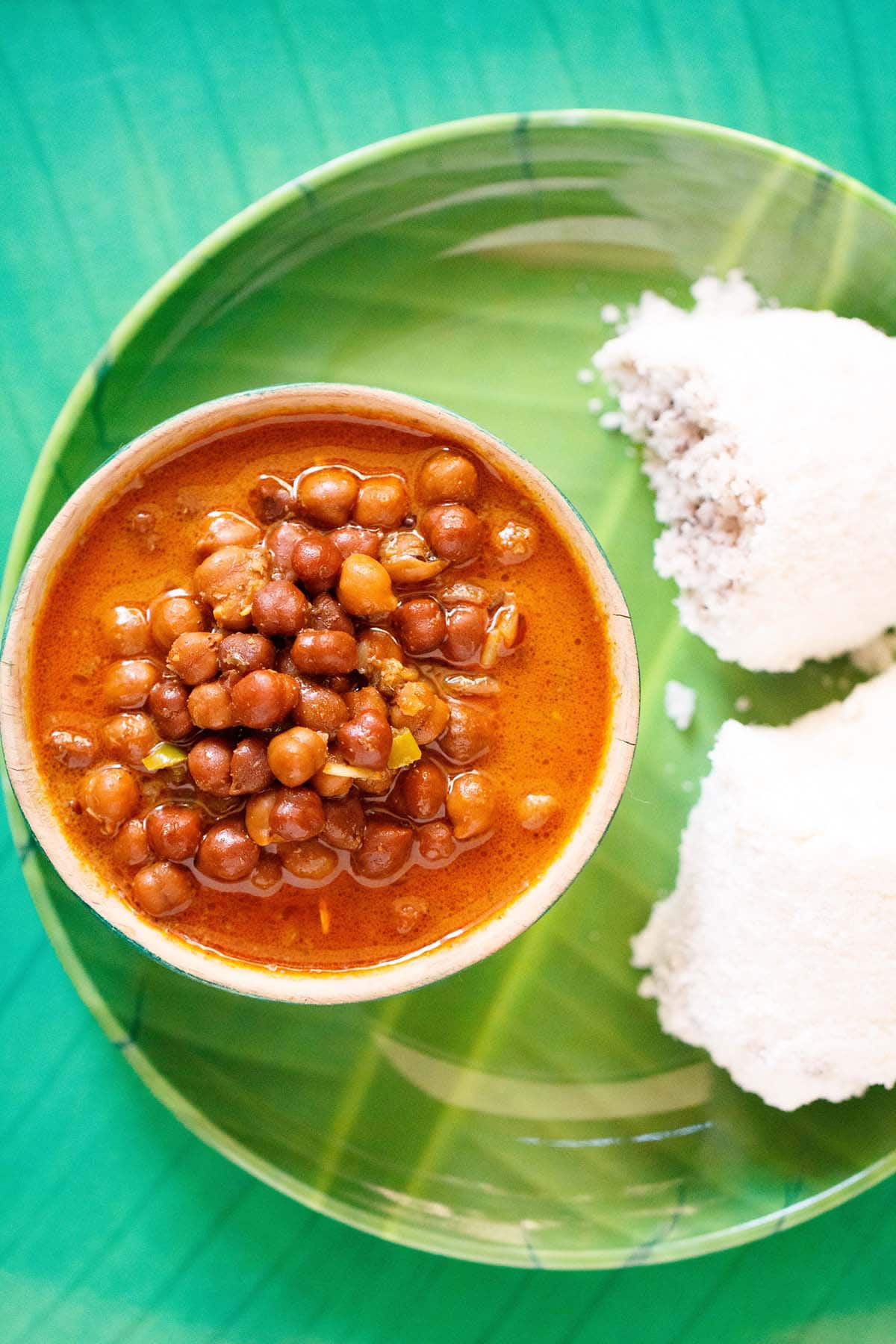
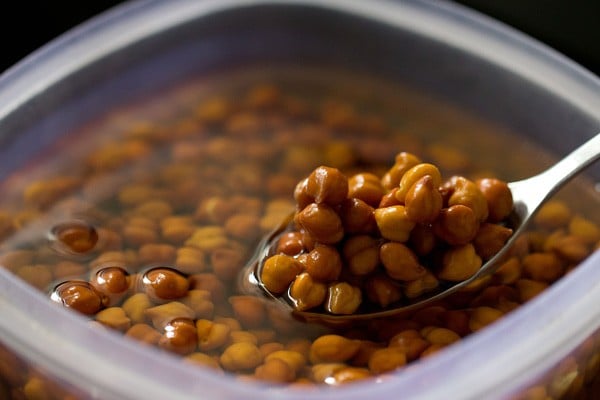
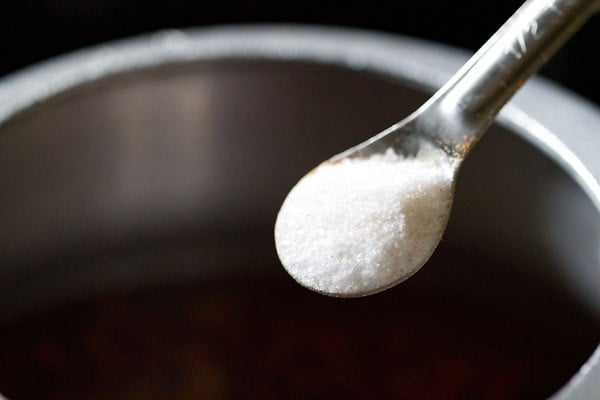

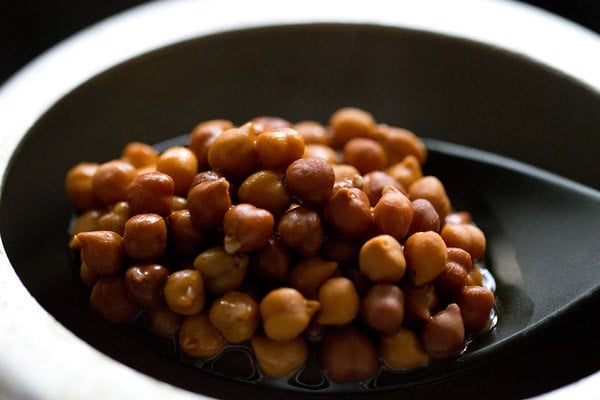
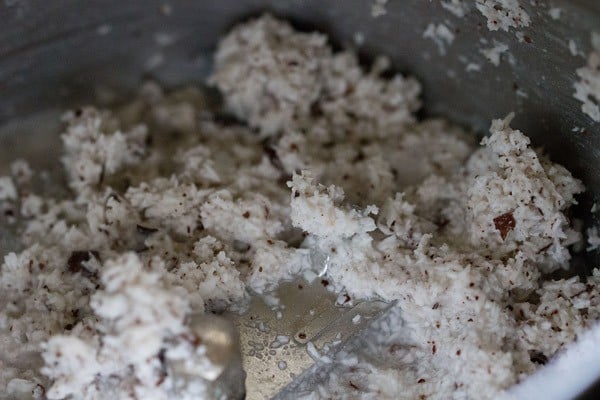
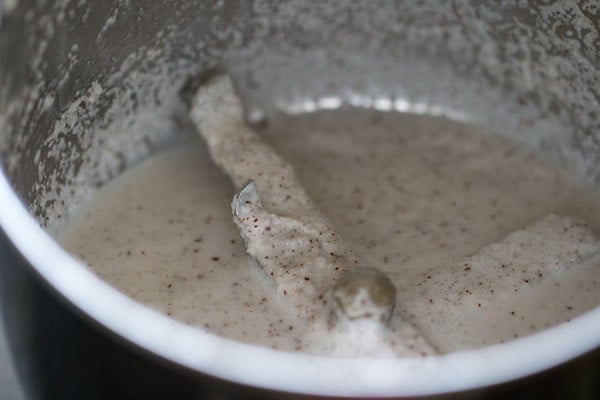
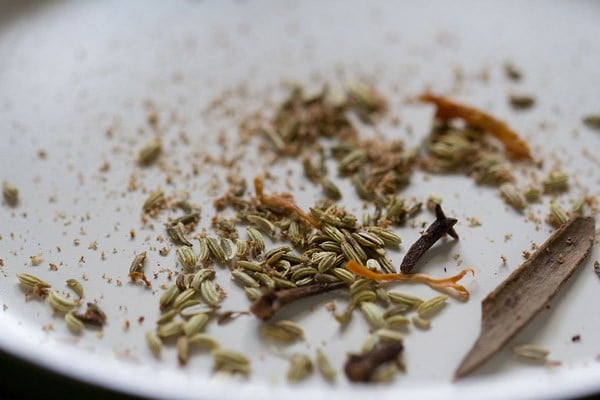
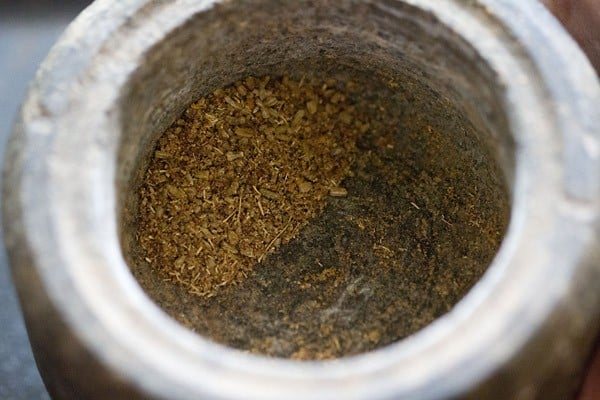
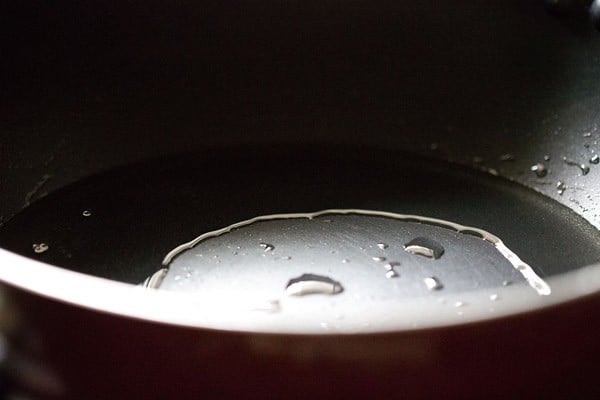

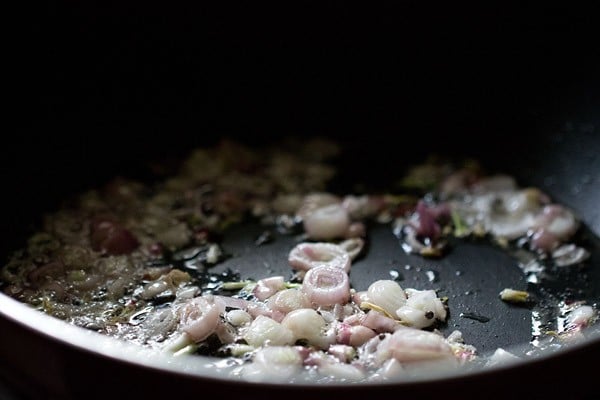
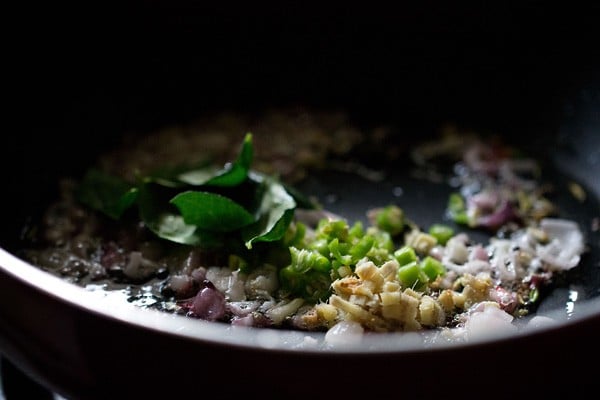
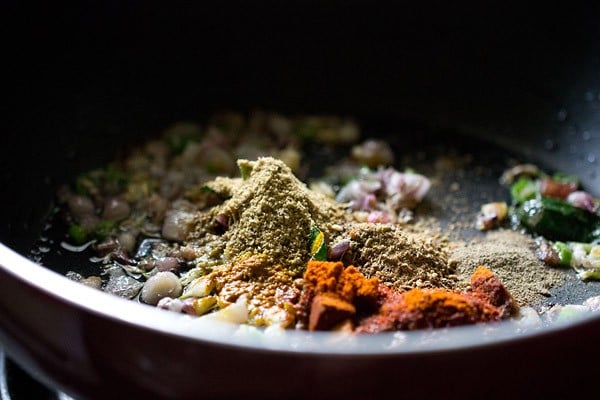
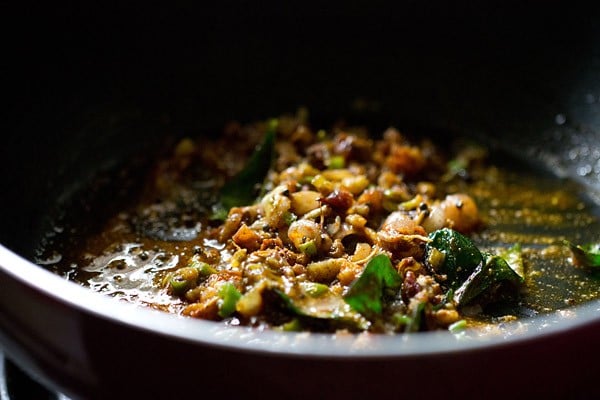
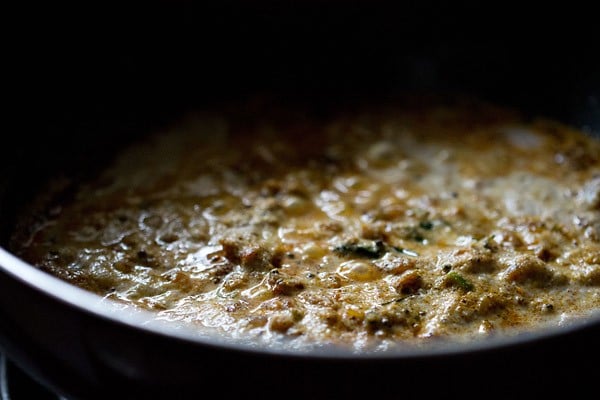
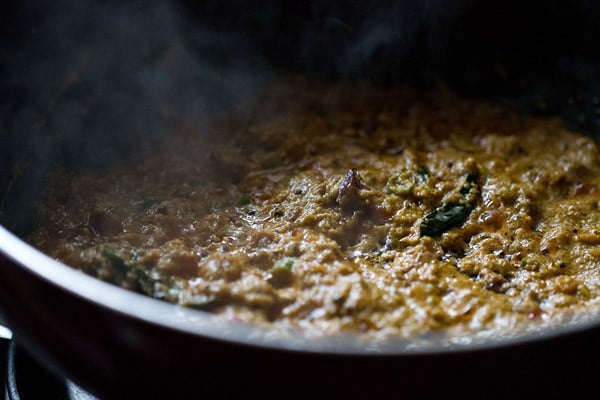

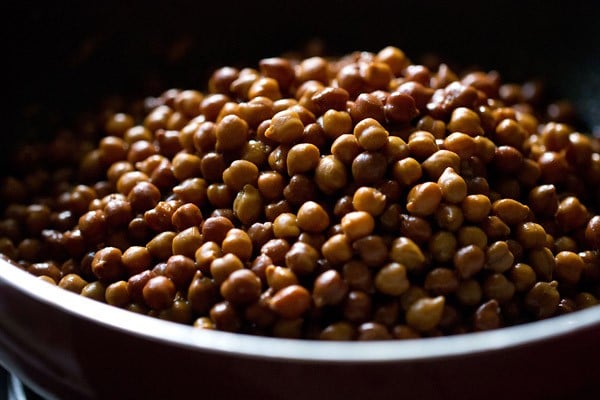
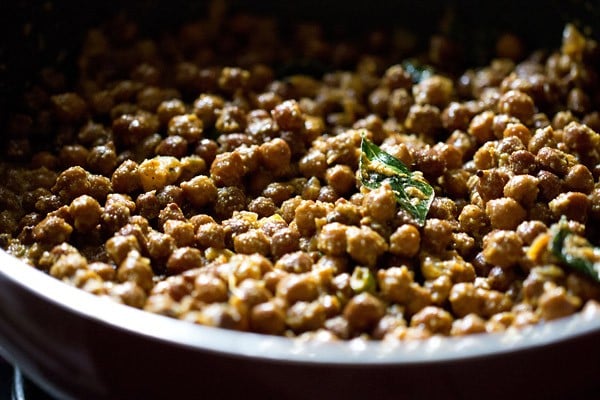
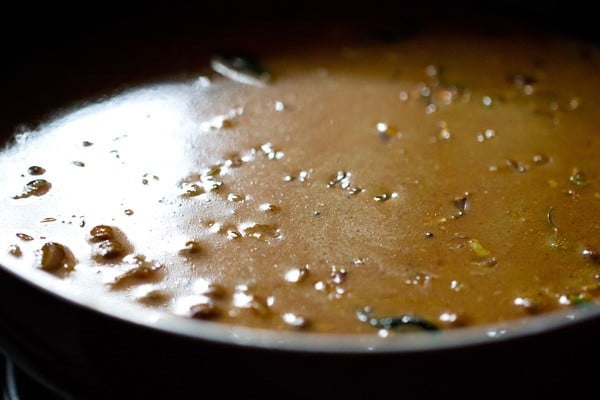
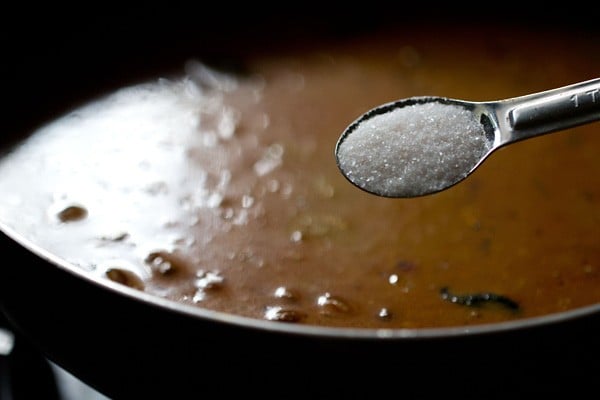
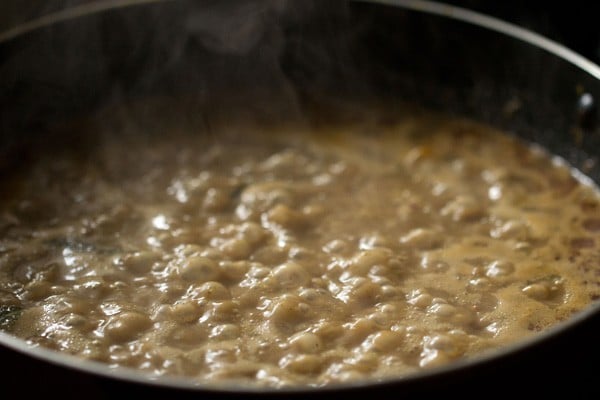
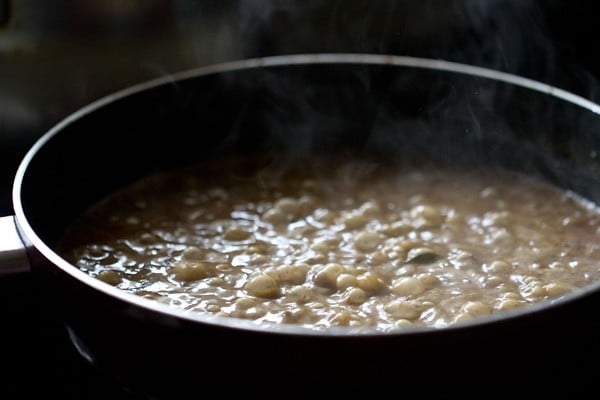
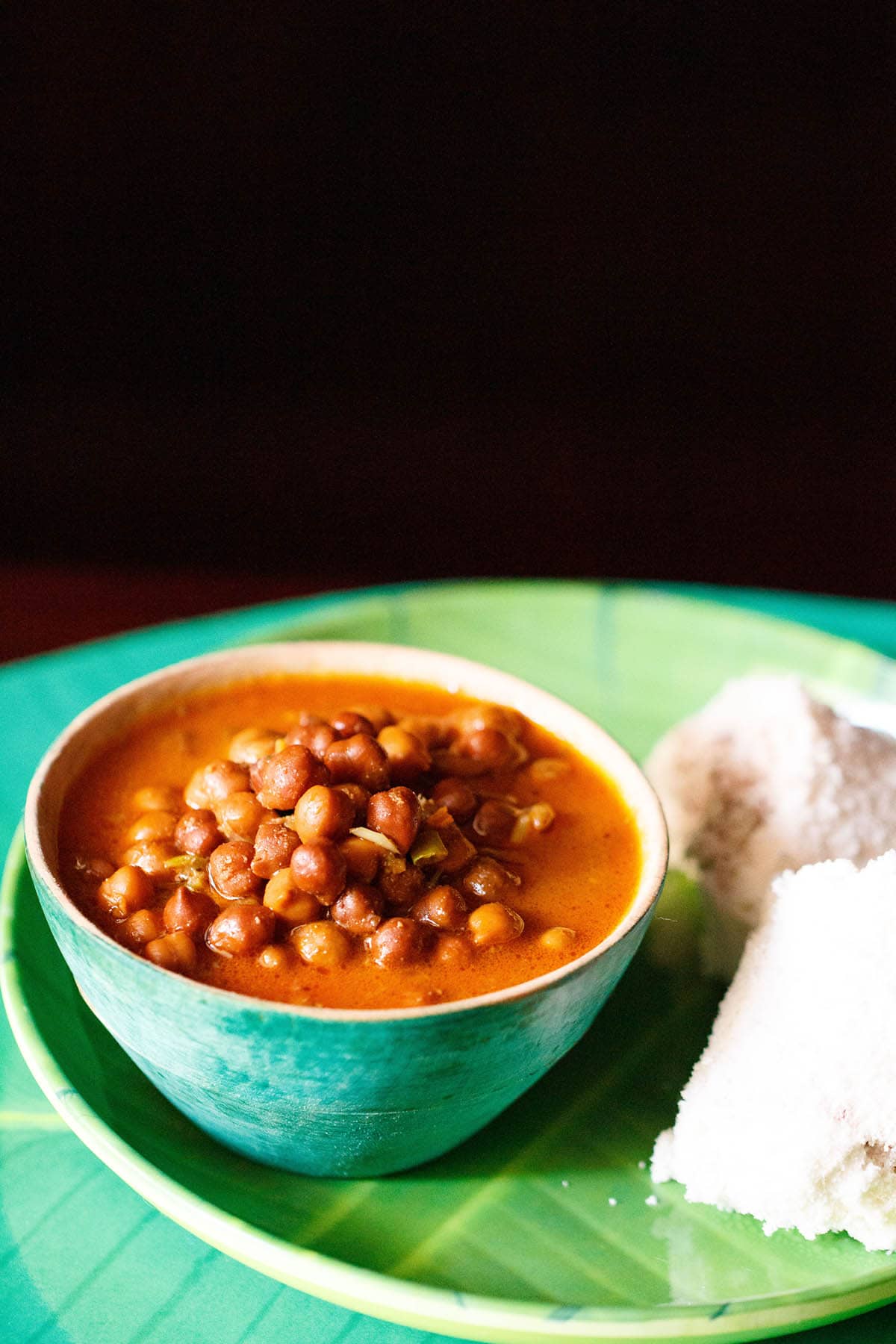
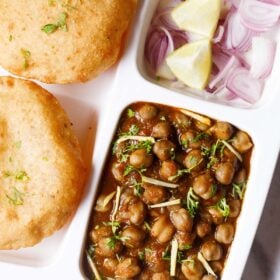
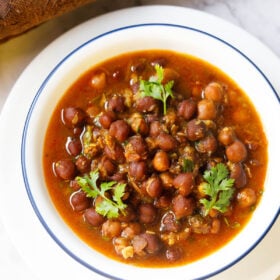
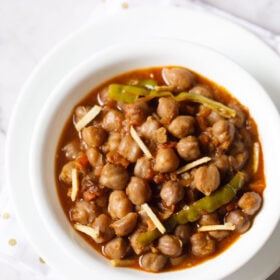
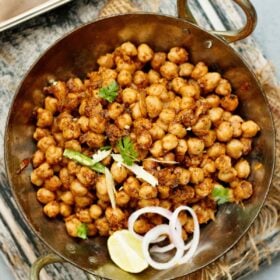

title: “Kadala Curry Kadala Kari " ShowToc: true date: “2024-09-27” author: “Sadie Lester”
About Kadala Curry
Kadala is the Malayalam word for “chickpeas,” which are also known as kala chana, desi chana or whole bengal gram. Kari means “curry,” which you might’ve already guessed from context clues. Chickpeas are a great source of vegetarian protein, as well as fiber and nutrients, making this a healthy curry option. This traditional recipe from Kerala is also naturally vegan and gluten free, making it a lovely meal for sharing with friends and family. Kadala kari and Puttu (steamed rice and coconut cakes) is one of my favorite breakfast combos, which isn’t surprising given its popularity in the state of Kerala. While this pairing makes for a delicious morning meal, you can also serve kadala curry with rice, chapatis or pooris for lunch or dinner. This recipe calls for a special Kerala garam masala (garam masala simply means “a warming spice blend or spice mix”). Since this blend is not readily available in all stores, I have made a very small amount of the spice blend that is just enough for this recipe. As with many Indian recipes, there are many variations of kadala curry, ranging from gravy to a semi-dry version. Some variations use coconut milk, others use fresh or roasted coconut, and still others don’t use coconut at all. This particular recipe has been loosely adapted from the ‘Essential Kerala Cookbook’ by Vijayan Kannampilly. This spicy kadala curry is also quite versatile; it can be served with puttu, appams, Idiyappam or with steamed rice, chapati or poori depending on what you have on hand and what you prefer.
How to Make Kadala Curry
Prepare Chickpeas
1. You will first need to rinse and then soak 1 cup black chickpeas in 2 cups of water for 8 to 9 hours (or overnight). Note: You can also use white chickpeas instead of black chickpeas. Tip: In a hurry? You can speed up the soaking process by bringing the water to a boil before pouring over the chickpeas. Allow them to soak in the hot water for an hour before draining and proceeding with cooking. For a super speedy shortcut, you can also opt to use drained and rinsed canned white chickpeas – if you do, simply skip to step 5. 2. Add the soaked black chickpeas to a 3 litre stovetop pressure cooker with ½ teaspoon salt. 3. Add 2.5 cups fresh water. 4. Stir to combine, then pressure cook the chickpeas for approximately 9 to 10 whistles, until they are tender and cooked through. Reserve the stock (a.k.a. aquafaba) and keep it aside. If you prefer you can choose to cook the chickpeas in a pot on the stovetop or in the Instant Pot adding water as needed.
Make Coconut Paste
5. While the chickpeas are cooking, add ½ cup tightly packed grated coconut in a grinder or blender jar. 6. Add ¼ to ⅓ cup water and grind or blend to a smooth paste. (Add more water if required.) Keep the ground coconut paste aside. Remember to blend or grind the coconut finely. Make Kerala-style Garam Masala 7. In a small pan, dry roast the following five spices till fragrant:
½ teaspoon fennel seeds2 to 3 single strands of mace1 inch cinnamon stick3 whole cloves 3 pinches of grated nutmeg or nutmeg powder
This is just a light roasting to awaken the oils in the spices; don’t over-do it. Note: If you prefer to use a pre-packaged spice blend, you are welcome to. 8. Using a small spice grinder, coffee grinder or a mortar & pestle, grind or pound these five spices to a semi fine or fine powder. Keep aside.
Make Kadala Curry
9. Heat 2 tablespoons of coconut oil in a pan. Coconut oil gives a really good flavor but if you don’t have it on hand then feel free to use any neutral-tasting oil. 10. Add ½ teaspoon of mustard seeds and let them crackle. 11. Add ⅓ cup chopped pearl onions or shallots. Stir and sauté for a minute. 12. Add 1 teaspoon chopped ginger, 1 teaspoon chopped green chilies, and 10 to 12 curry leaves. Sauté till the shallots turn translucent or light golden. 13. Add 1 teaspoon red chili powder, 1 teaspoon coriander powder, ¼ teaspoon black pepper powder and the entirety of the ground Kerala garam masala. If you are using packaged Kerala garam masala, then add 1 teaspoon of it. Tip: I use a full teaspoon of red chili powder in this recipe because we like it spicy! For a milder version, reduce to ½ teaspoon. Also, tomatoes are not added in this recipe, but you can add 1 finely chopped medium tomato if you like. 14. Stir the masalas very well on low heat and sauté for a minute. 15. Add the ground coconut paste. 16. Stir and mix very well. 17. Sauté stirring often for about 4 to 5 minutes on low heat. 18. Add the cooked black chana (kadala). 19. Stir and mix very well.
Simmer Kadala Curry
20. Add 1 to 1.25 cups liquid – you can use water, chana stock (the water in which the chickpeas were cooked) or a combination of both. Stir to mix. For a thicker consistency in the curry add less water. For a thin consistency you can increase the water a bit, but make sure not to dilute the flavors by adding too much of water. 21. Season with salt and stir the curry again. Remember to start with less salt – you can always add more, but you can’t take it away! 22. Let the curry come to a boil on medium heat. 23. Simmer the curry till all the flavors of the kadala curry are well blended. You will also see some oil specks floating on top. To thicken the curry you can also mash some of the black chickpeas with the back of a spoon. 23. Serve kadala curry hot or warm with puttu or appams or Idiyappam or steamed rice or Malabar Parotta or Poori. Any leftover stays good for about 1 day in the fridge in an air tight container. While reheating add a splash of water if the curry has thickened too much. Reheat in a pan or a small pot. Please be sure to rate the recipe in the recipe card or leave a comment below if you have made it. For more vegetarian inspirations, Sign Up for my emails or follow me on Instagram, Youtube, Facebook, Pinterest or Twitter. Chole Recipe | Authentic Punjabi Chole Masala Kala Chana Recipe Amritsari Chole Pindi Chole | Pindi Chana This Kadala Curry post from the archives first published in January 2015 has been republished on 28 September 2021 and updated on 20 July 2022.





























